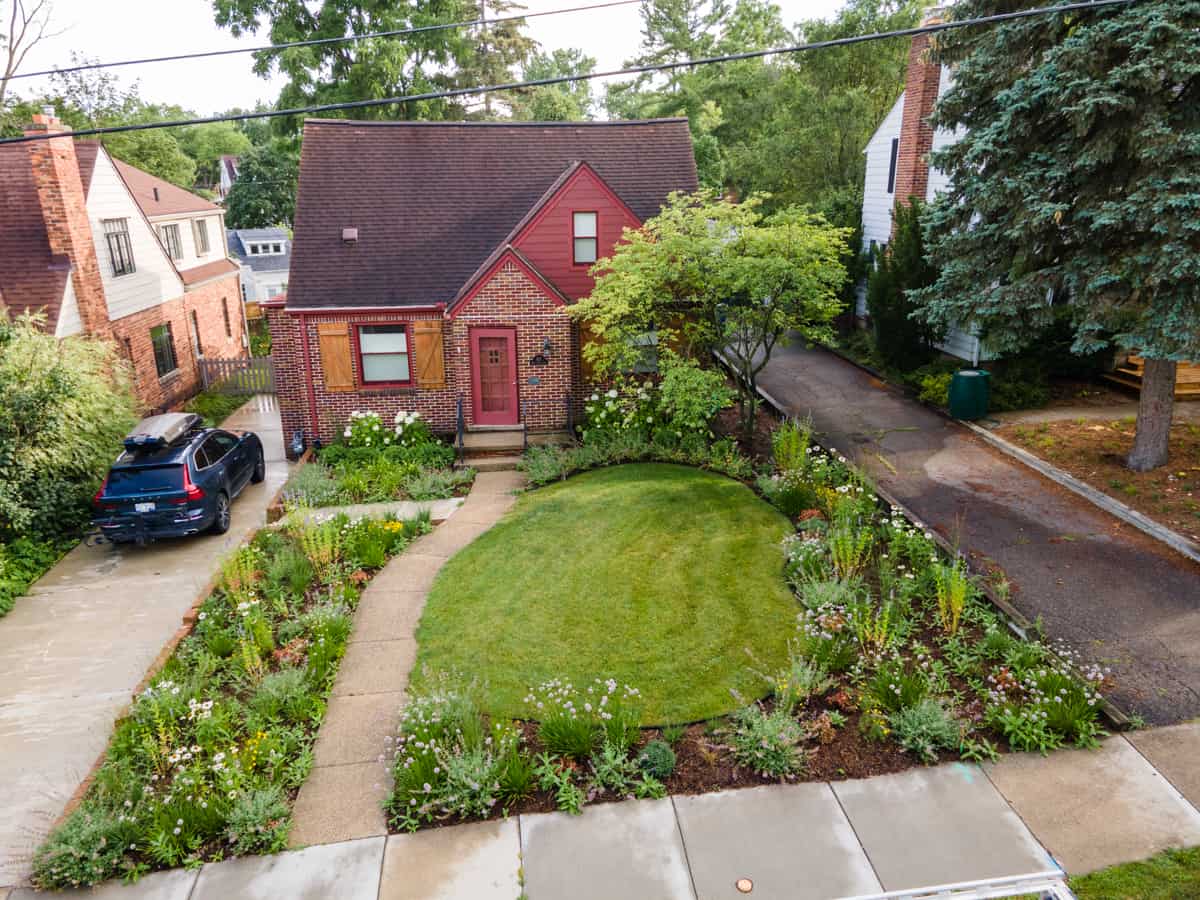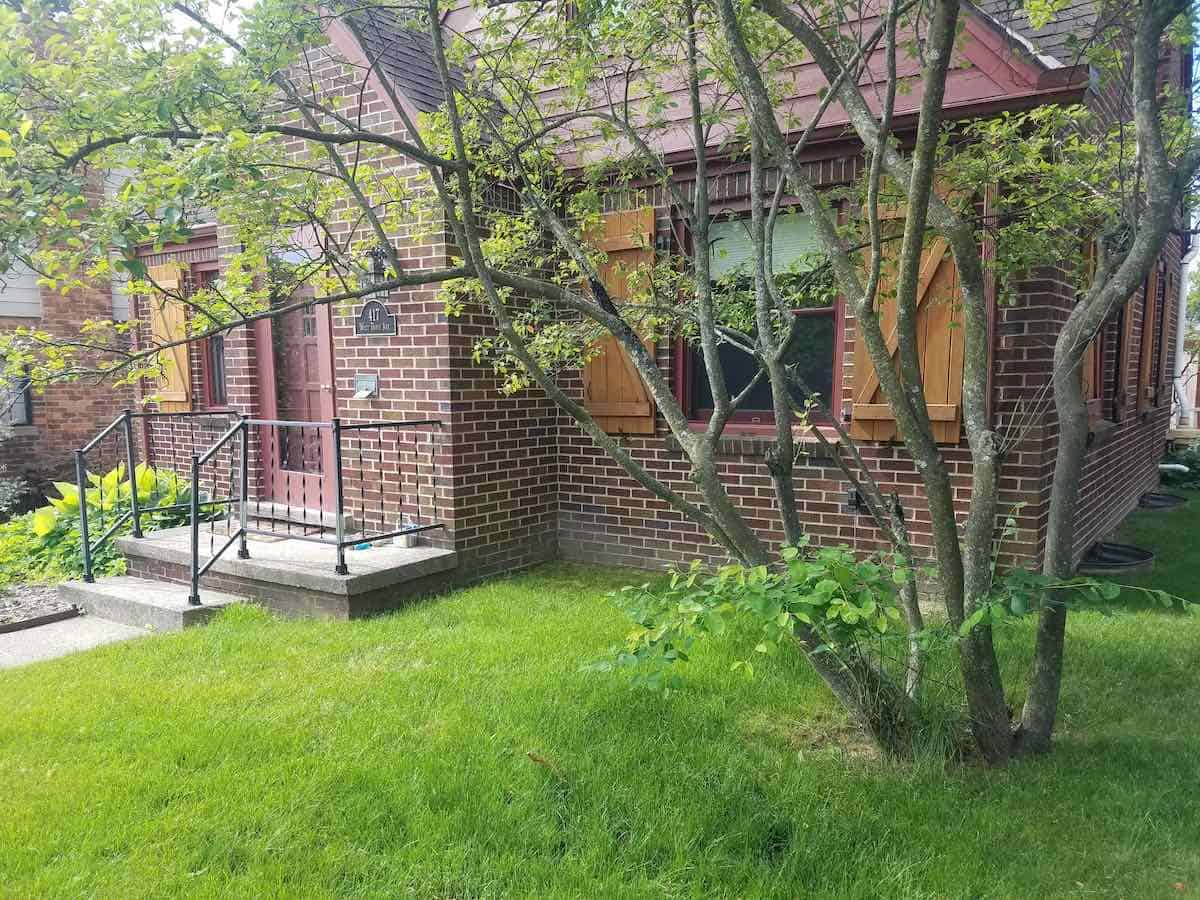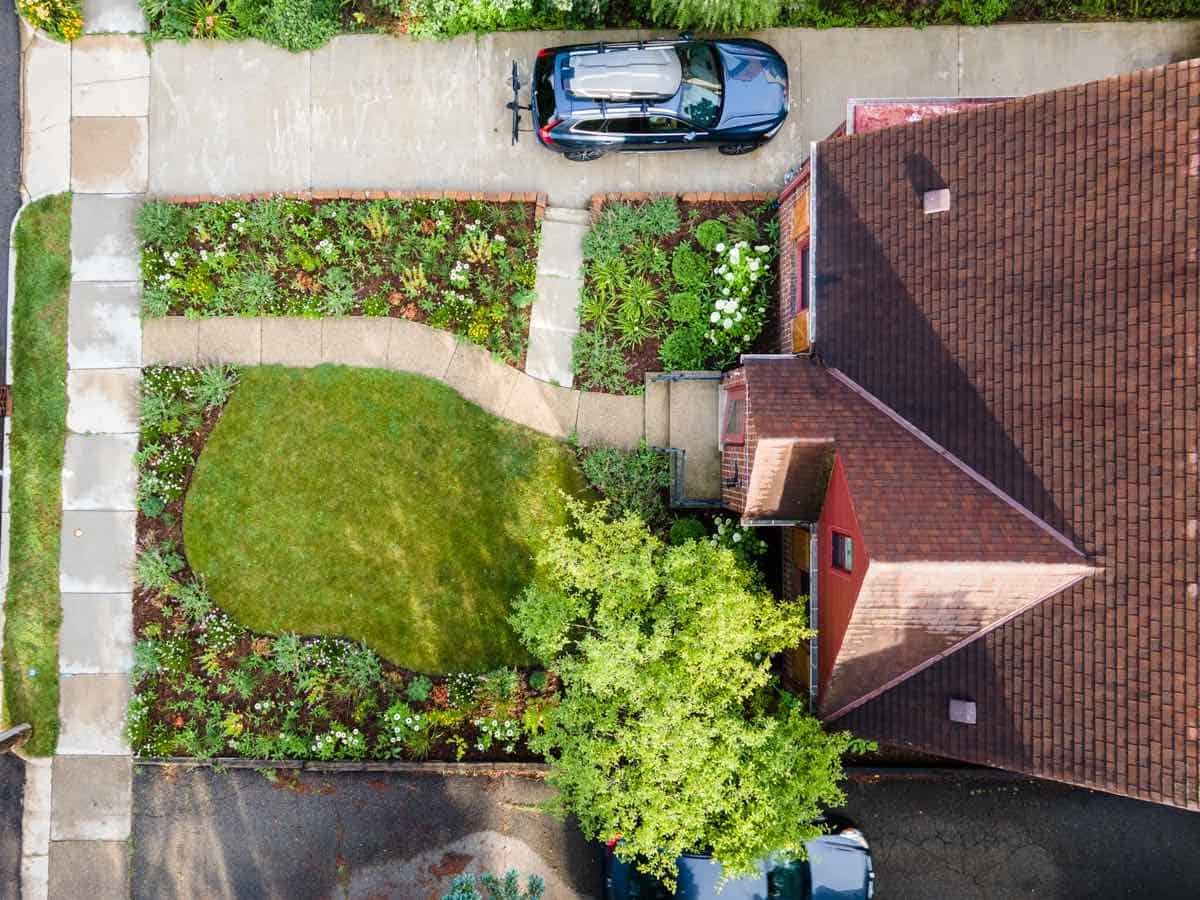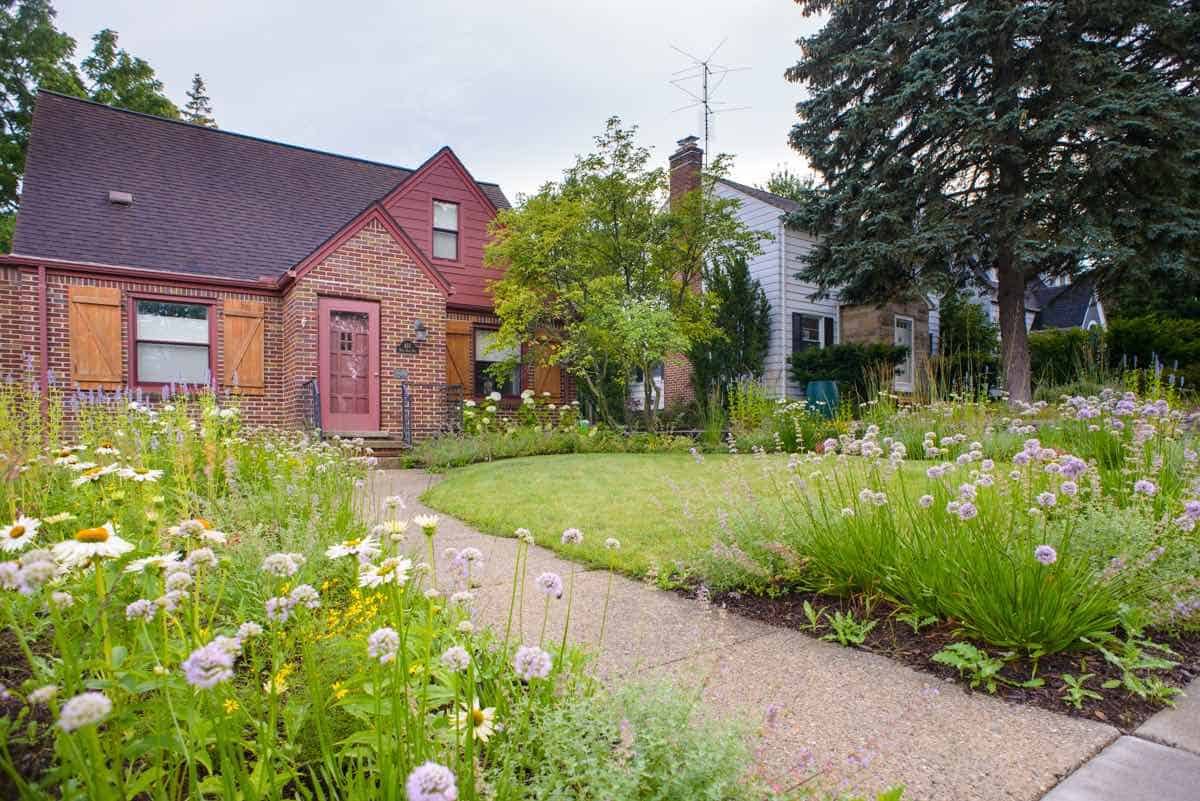Neglected Landscape Blossoms into a Pollinator Paradise
Posted on October 30, 2021

[vc_row][vc_column][vc_column_text]A lack of maintenance can mask the potential of even the most promising of outdoor spaces. Weeds, deteriorating hardscapes, and overgrown shrubbery can drastically spoil the look of a landscape, and quickly become overwhelming when left unattended. However, with thoughtful design, quality craftsmanship, and a little extra love, many of these spaces emerge as true showpieces.
This Ann Arbor, Michigan residence was the perfect example of this. Boasting generous grounds and an idyllic west side location, the surrounding landscape had sadly fallen into poor condition following years of underinvestment. Fortunately, its brand new owners, a young couple native to Ann Arbor, saw its potential and decided to give it a much-needed makeover.
 When we arrived at the property both the front and back areas were completely overgrown with weeds and invasive groundcovers. A large lawn took up most of the rear, offering little in the way of useable space for the young couple and a substantial amount of ongoing maintenance to make their lives difficult.
When we arrived at the property both the front and back areas were completely overgrown with weeds and invasive groundcovers. A large lawn took up most of the rear, offering little in the way of useable space for the young couple and a substantial amount of ongoing maintenance to make their lives difficult.
In place of the overgrown yard, the couple wanted to create a thoughtful, pollinator-friendly space that could boost the curb appeal of their home and serve as a lush, low-maintenance oasis.
We began by excavating and replacing the soil in the existing planting beds, removing weeds, and creating a blank canvas for fresh plantings. We also expanded the planting beds in the front of the property, lengthening them to frame the property line and sidewalk. The lawn area was reduced to a small central area, creating a place for the eye to rest in contrast with the rich plantings. In practical terms, this also reduced the maintenance requirements for the beds.
 With the layout in place, we created a series of plantings inspired by master plant designer Piet Oudolf. These were made up of a dense mix of grasses including Karl Foerster and Moorflame Molinia, and perennials including Baptisia, Craigieburn Wood Spurge, and summer-blooming Blue Fortune agastache.
With the layout in place, we created a series of plantings inspired by master plant designer Piet Oudolf. These were made up of a dense mix of grasses including Karl Foerster and Moorflame Molinia, and perennials including Baptisia, Craigieburn Wood Spurge, and summer-blooming Blue Fortune agastache.
In addition to looking beautiful, this type of planting has the added benefit of being easy to maintain, as the perennials naturally crowd out any weeds. Come spring, a lawnmower can be used to quickly break down last season’s plant debris to create natural mulch. For a more detailed guide on this type of planting, we recommend the book The Know Maintenance Garden by Roy Diblik.
 This project was a collaboration between designer Lauren Yelen and the talents of many crews, including the maintenance team that keeps the landscape looking fabulous year-round! It took only 2 days to complete from start to finish and was budgeted around $15,000.[/vc_column_text][/vc_column][/vc_row]
This project was a collaboration between designer Lauren Yelen and the talents of many crews, including the maintenance team that keeps the landscape looking fabulous year-round! It took only 2 days to complete from start to finish and was budgeted around $15,000.[/vc_column_text][/vc_column][/vc_row]
